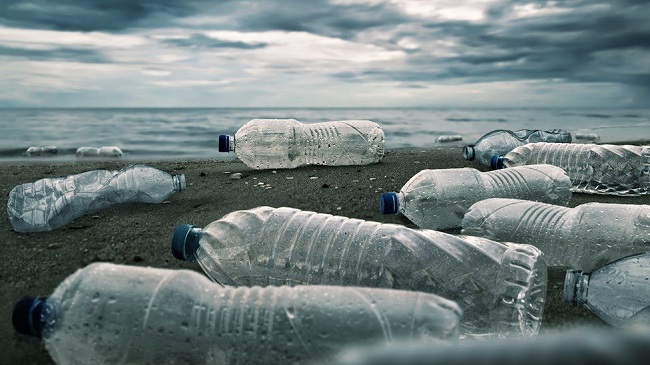A new study released in Science on Thursday, November 14, 2024, determines that just four policies can reduce mismanaged plastic waste – plastic that isn’t recycled or properly disposed of and ends up as pollution – by 91% and plastic-related greenhouse gasses by one-third.


The policies are: mandate new products be made with 40% post-consumer recycled plastic; cap new plastic production at 2020 levels; invest significantly in plastic waste management – such as landfills and waste collection services; and implement a small fee on plastic packaging. This policy package also delivers climate benefits, reducing emissions equivalent to taking 300 million gasoline-powered vehicles off the road for one year.
The study, “Pathways to reduce global plastic waste mismanagement and greenhouse gas emissions by 2050,” by researchers at the University of California Berkeley and the University of California Santa Barbara, comes in advance of negotiations in Busan, Republic of Korea (November 25-December 1, 2024), where delegates from more than 190 countries are expected to iron out the final details of the world’s first legally binding treaty on plastic pollution.
“This is it. These upcoming negotiations in Busan are our one chance to come together as a planet and fix this problem,” said Dr. Douglas McCauley, Professor at UC Santa Barbara, Adjunct Professor at UC Berkeley. “One of the most exciting discoveries in this research is that it is actually possible to nearly end plastic pollution with this Treaty. I’m cautiously optimistic, but we can’t squander this once-in-a-lifetime opportunity.”
If no action is taken in Busan, annual plastic consumption will rise 37% between 2020 and 2050, and plastic pollution will nearly double across the same period.
“This study demonstrates how far we have come in not just quantifying the manifold problems surrounding plastics, but also in identifying and evaluating potential solutions,” said Dr. Roland Geyer, Professor of Industrial Ecology, Bren School of Environmental Science & Management at UC Santa Barbara. “I am very proud of what our team was able to achieve in time for the final round of negotiations for the Global Plastics Treaty.”
By continuing with business as usual, the world would generate enough litter between 2011 and 2050 to cover Manhattan in a heap of plastic 10 times the height of the Empire State Building. In a business-as-usual future, greenhouse gas emissions related to plastic would jump 37% from 2020 levels to 3.35 gigatons of carbon dioxide equivalent in 2050 – this is the same as nearly 9,000 natural gas-fired power plants operating for one year or the energy use for more than 436 million homes for one year.
“There are multiple pathways available to negotiators, but it does require ambition,” said Sam Pottinger, Senior Research Data Scientist, Eric and Wendy Schmidt Centre for Data Science and Environment at UC Berkeley. “The impact that we’re really hoping to see on the treaty is that it is data-informed. As the treaty comes to its final conclusion before ratification, we want folks to be aware of how much progress they’ve actually made, at least according to the best science that we have available right now.”
Countries in the Global South will continue to bear the greatest burden of the plastic crisis. Financing mechanisms created in the treaty could drive much-needed investment into waste management and recycling infrastructure in these regions to reduce plastic pollution – thus helping to solve a major global environmental justice issue.
“I’m optimistic about a sustainable future,” said Dr. Nivedita Biyani, Researcher on Global Plastic Modeling, Benioff Ocean Science Laboratory at UC Santa Barbara. “This policy work shows that we can reach minimal mismanaged plastic waste if we can come together in action. This provides policymakers with a novel tool that isn’t prescriptive – they can combine various policies as they see fit. Going forward, I think a mechanism to gather data on plastic production and trade will be a key factor. We need supply chain transparency here.”
The study is built on insights from an AI-generated tool developed by a team of plastic researchers, data scientists, and AI researchers at the Benioff Ocean Science Laboratory and Bren School of Environmental Science & Management at University of California Santa Barbara, and the Eric and Wendy Schmidt Center for Data Science & Environment at University of California, Berkeley.
The tool uses machine learning to combine information about population growth and economic trends to forecast the future of plastic production, pollution and trade.










